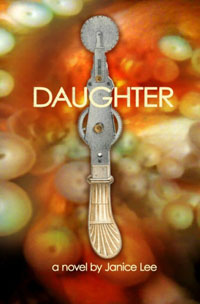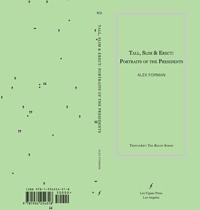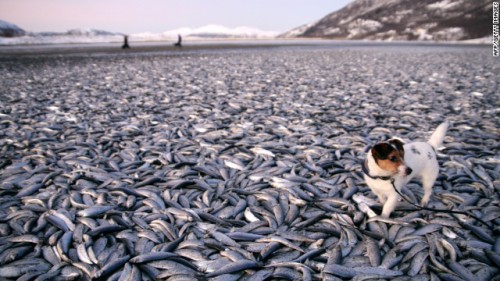For their 6th issue, the always excellent Birkensnake is looking for strangers to cull the content for versions of an entire issue, as an experiment in curation: “We hope that many prospective editors will become involved in this project, and that there will be a large number of different Birkensnake 6s.”
TWO OR THREE WAYS TO RESURRECT PHILIP K. DICK
 Philip K. Dick: Remembering Firebright
Philip K. Dick: Remembering Firebright
by Tessa B. Dick
CreateSpace, March, 2009 & 2010
228 pages / $15.77 Buy from Amazon
&
Daughter
by Janice Lee
Jaded Ibis Press, 2011
144 pages / Color Ed. $39 Buy from Amazon or Jaded Ibis
B/W Ed. forthcoming Summer 2012
The last thing Philip K. Dick’s work needs is another philosopher’s commentary. After Fredric Jameson’s “synoptic” reading of Dick’s corpus and Laurence A. Rickels’ 400-plus page I Think I Am: Philip K. Dick, it might seem prudent, indeed respectful, to refrain from any further philosophical discussion of PKD. However, after spending some time with Tessa B. Dick’s “memoir” and Janice Lee’s “novel,” I am inclined to discuss a dimension of Dick’s that neither Jameson nor Rickels were able to deal with in their commentaries: namely, the particularly contemporary problem of living without myth. Anthropology tells us that peoples of the past actually believed in their myths; a mythological framework provided by the gods presumably told you how to lead your life and what your ultimate place in the universe was. Now that all of our myths have been more or less discredited by the advent of modernity, how might a viable contemporary myth cope with the disintegrating social edifice and the resulting modern subject who minimally experiences the “death of God”?
We’ll start with a strident way in – that of Daughter’s vision of “the head of a human figure with a terrifying face, full of wrath and threats” appearing to the protagonist “in the sky, on a night when the stars were shining and she stood in prayer and contemplation.” These two elements – the terrifying face of the big Other, and the lost subject in search of meaning and the miraculous – are constants in Philip K. Dick’s biography. In the late seventies, Dick recalled: “There I went, one day [in 1963], walking down the country road to my shack, looking forward to eight hours of writing, in total isolation from all other humans, and I looked up in the sky and saw a face. . . . and it was not a human face; it was a vast visage of perfect evil.” To the psychological impact of such an encounter, Janice Lee supplies a concrete example: “At the sight of it, she feared that her heart would burst into little pieces. Therefore, overcome with terror, she instantly turned her face away and fell to the ground. And that was the reason why her face was not terrible to others.”
April 30th, 2012 / 12:00 pm
Those interested in the Oulipo should peep Many Subtle Channels: In Praise of Potential Literature by Daniel Levin Becker, out today from Harvard University Press. [addendum: excerpt of an excerpt from The Believer]
Wittgenstein’s Mistress: An Index
A while back, I published an index for Wittgenstein’s Mistress. Blake’s recent post about WM got me thinking that I should repost it here. Please feel free to copy/distribute it/whatever; my goal is to assist anyone reading or doing research on the book, which I think one of the two greatest novels of the past 25 years.
Notes:
- Be warned! I’m sure there are errors. (If you find any, please let me know, as well as any other revisions, comments, or suggestions.)
- Underlined entries are incomplete; underlined page numbers are uncertain. (If you can expand/confirm any of these in the comments, I’ll update the index, thanks!)
The Index
For you: a copy of ARK CODEX ±0. Comment to win, and I’ll respond to the winner in a day or so. I have this book at home and it is beautiful.
The New Yorker‘s diaeresis tic bothers some people. It’s the double-dot thing they put in words like “coöperate” to tell you to pronounce both syllables. It’s also “the single thing that readers of the letter-writing variety complain about most.” As I read this piece about it, I kept waiting for Mary Norris to announce that they’d finally decided to change their style. But apparently the diaeresis lives on. What do you think, is the diaeresis annoying or endearing? (I like it.) Diaeresis.
Tall, Slim and Erect: Portraits of the Presidents
 Tall, Slim & Erect: Portraits of the Presidents
Tall, Slim & Erect: Portraits of the Presidents
by Alex Forman
Les Figues Press, 2012
131 pages / $15 Buy from Les Figues Press
James Monroe was the third president to die on the fourth of July. Franklin Pierce was arrested for running a woman over with his horse. James Buchanan carried his head cocked to the side like a poll parrot (whatever that is). These and other trivial-pursuit answers are drawn from Tall, Slim & Erect: Portraits of the Presidents, Alex Forman’s compelling and often very funny book of short presidential biographies. With text appropriated from dozens of sources, Forman presents us with a surprisingly dishy view of our first thirty-seven leaders that, through her light touch, still manages to bring up some highly relevant questions about our expectations of history and our chaotic construction of public figures.
In his introduction to the text, Ben Ehrenreich characterized Forman’s effort as one to humanize the presidents, and the portraits are, indeed, deeply human, with a heavy emphasis on personal foibles and physical oddities. The Presidential body is essential to these portraits. Of course we might claim that the presidential body is essential to a great deal of political discourse—from Obama’s smoking and Cheney’s beat-less heart to that final dictatorial accessory, the glass coffin—but what Forman gives us is something different, not the body as symbol or the body as tool of power, but the body as body. Grant “had unusually small hands and feet,” Coolidge was “deficient in red corpuscles,” and while Washington’s famed wooden teeth don’t make an appearance, his pockmarks and bouts of dysentery do. The bodies depicted here are intimate bodies, embarrassingly physical, and not fit for public perusal—which makes it especially striking that this book is, in large part, a compilation of public perusals. Drawn from a few centuries worth of news, diaries, histories, speculations, Wikipedia articles, and gossip, Tall, Slim, & Erect is a distillation of the public gaze.
April 27th, 2012 / 12:00 pm
Why Do we Like Marie Calloway?

This is a good question to ask because: she has written only four stories and has appeared on Vice and has had requests from agents to represent her. Even though many writers in the online literary world, such as Elizabeth Ellen or Sam Pink have been writing for years before good things started to happen. And I don’t know if either of them even have agents.
So what is about Marie Calloway’s stories that make them so desired? Why would an agent assume she could write a book that would sell 100s of thousands?
To use Occam’s Razor to get to the simplest explanation, which I think explains the agent: is that Marie Calloway’s writing is about a young girl having sex. Which people love. Men love imagining a young woman having sex and young women want to read about other young women having sex. The writing is sensational, she uses famous people’s names, a young woman/girl has sex, she goes to fabulous cities like New York City or London. She mentions porn’s influence on male sexual behavior. She has sex with an older slightly famous writer who is married. She loses her virginity before marriage, has promiscuous sex. She is topical, she is sexual. She is Star/Enquirer magazine/Harlequin mixed with alt-lit.

